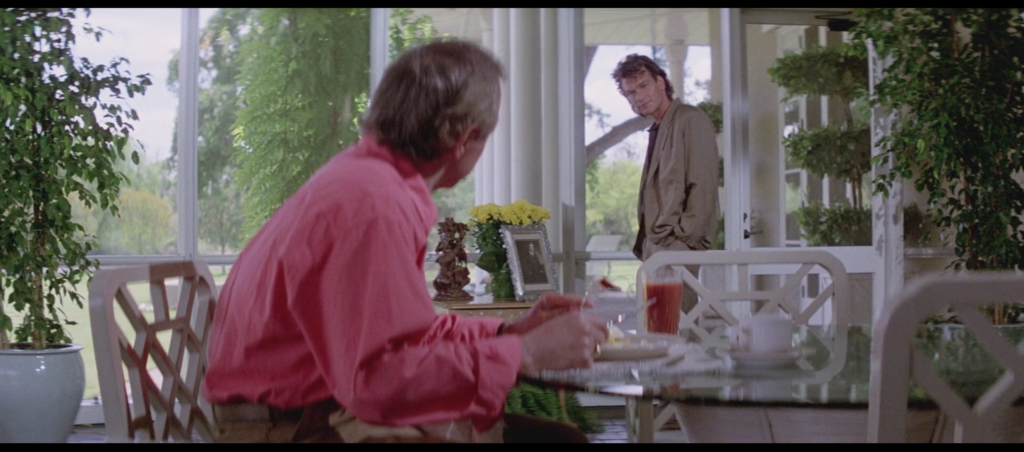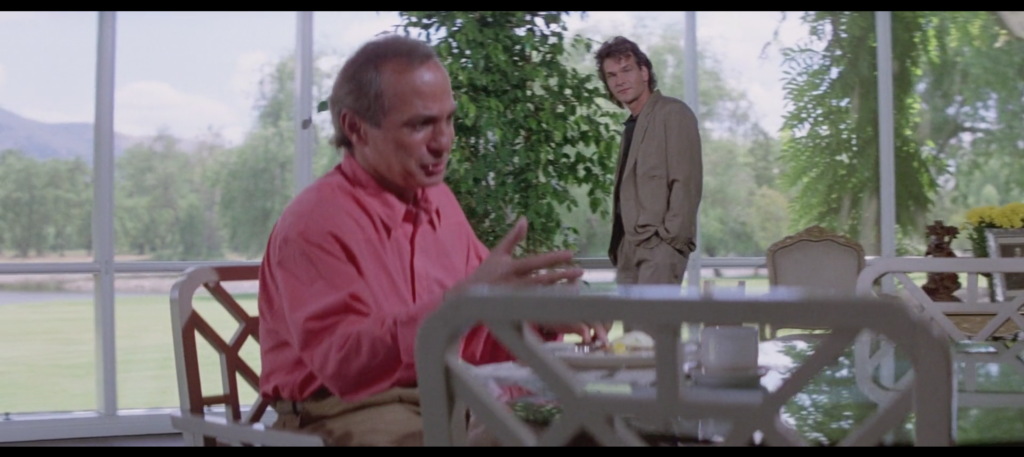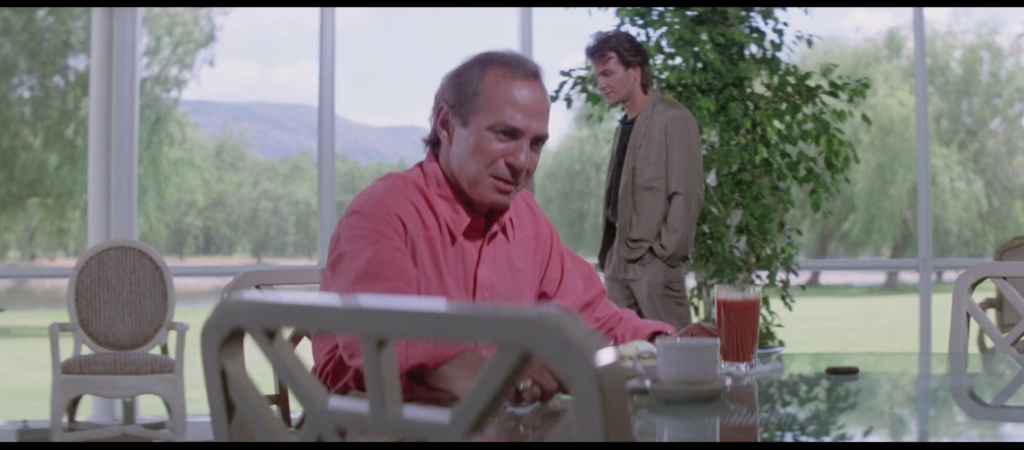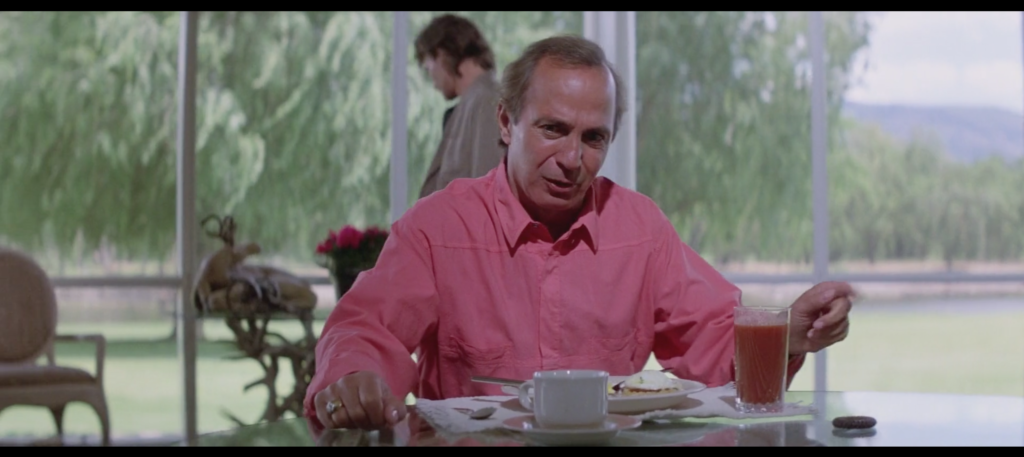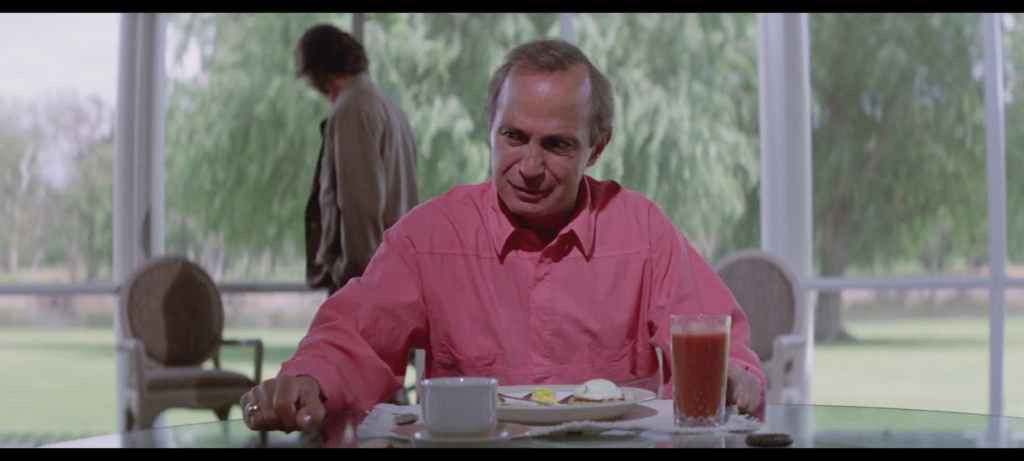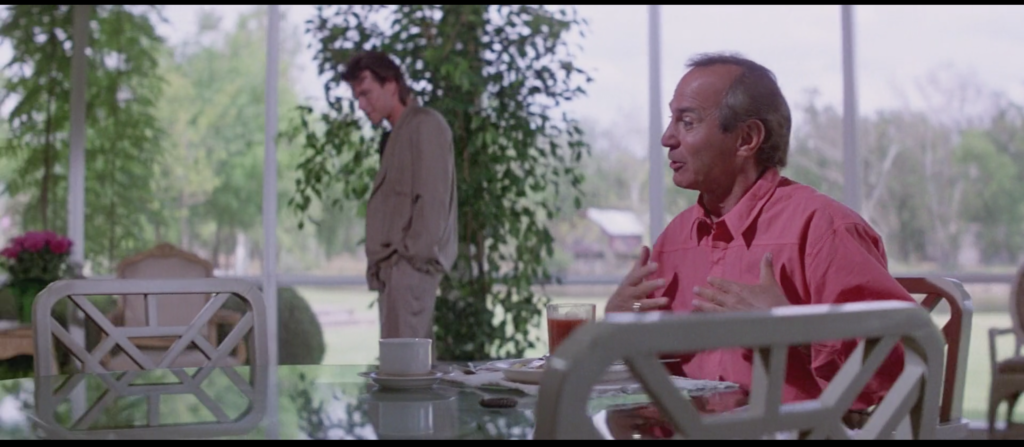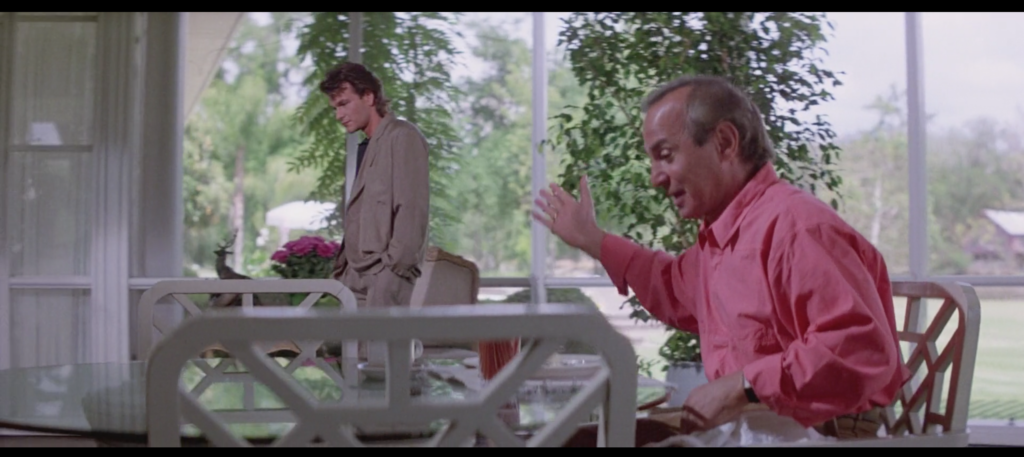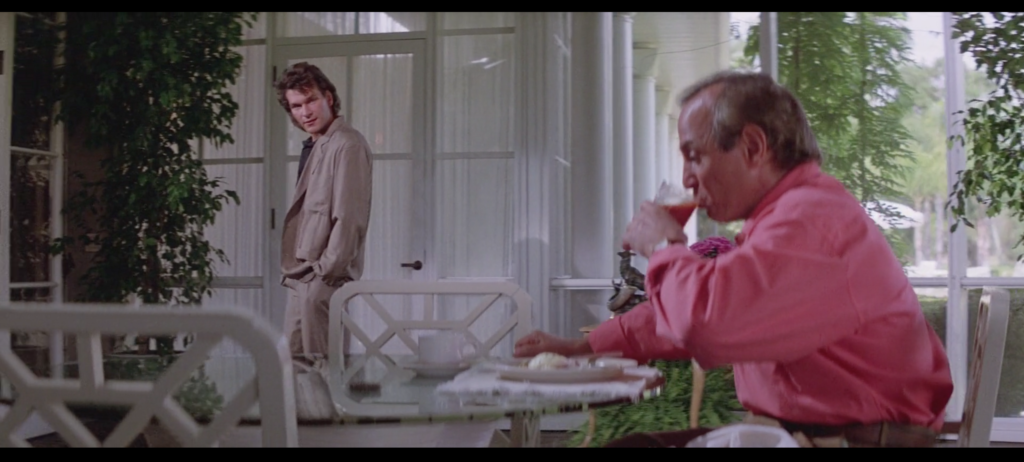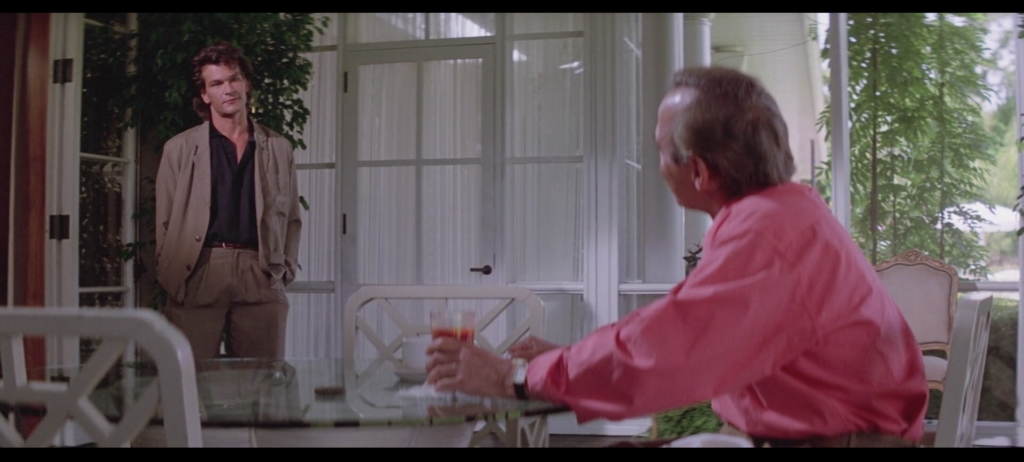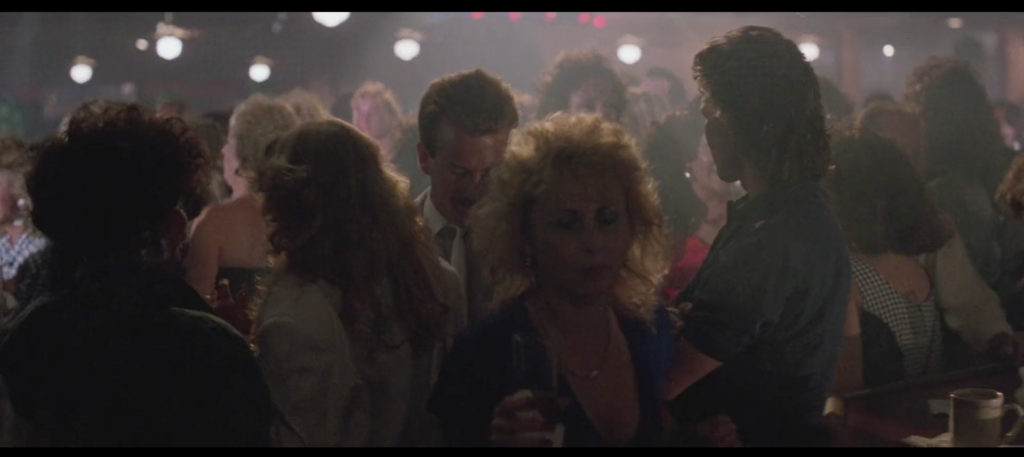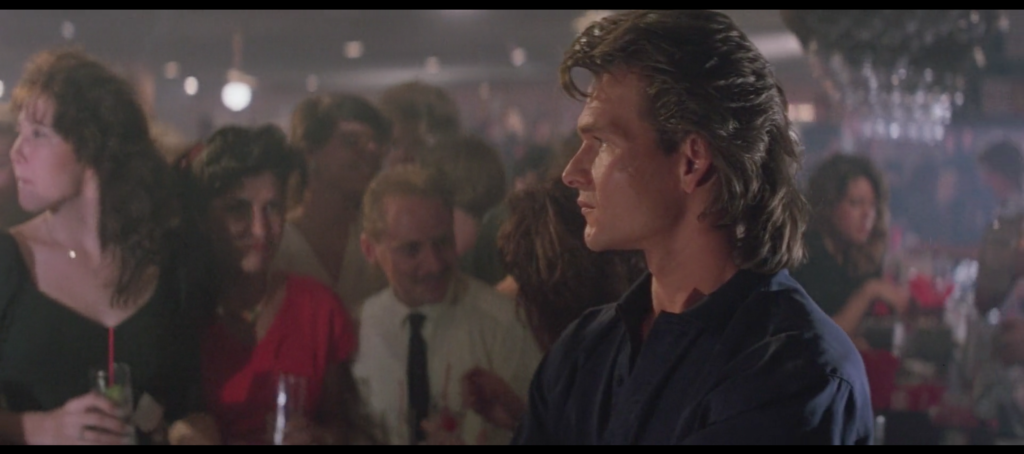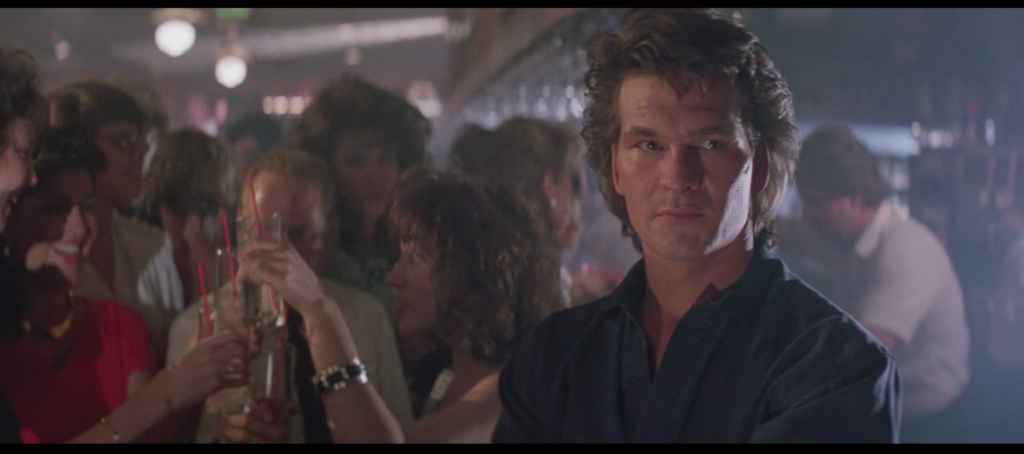Posts Tagged ‘dean cundey’
168. At the center of it all
June 17, 2019The speech in which Brad Wesley touts his accomplishments as a captain of industry to Dalton over breakfast and a Bloody Mary, revealing all of those accomplishments to involve the local establishment of downscale retail chains, is memorable for the obvious reason that this film’s chief antagonist says the sentence “Christ, JC Penney is comin’ here because of me!”
But that is not the only reason it stands out. Watch how cinematographer Dean Cundey (Jurassic Park, Who Framed Roger Rabbit?, Back to the Future, The Thing, Big Trouble in Little China, The Fog, Escape from New York) established Brad Wesley’s centrality to his own narrative by making him the center of the shot in which he spells out that narrative.
As Wesley rattles off his life story—coming up the hard way on the streets of Chicago, arriving in this nothing of a town after Korea, building it up into an empire of Fotomats, amassing both popular acclaim and a fortune in cash—the camera follows Dalton as he walks around Wesley at the perimeter of the round room in which he sits eating at a round table. It focuses on Dalton at the beginning of the journey, shifts to Wesley near the midpoint, and pulls back to Dalton at journey’s end. Their relative positions in the frame shift as well: Wesley starts at the left and winds up at the right, while Dalton does the opposite.
What is the purpose of this perspectival pas de deux, this theater in the roundhouse? To visually convey Wesley’s narcissism and his delusions of grandeur (which in the world of the film can be passed off for actual grandeur in a pinch). To emphasize the wary, hunter/hunted relationship between Dalton and Wesley, with their shifting focus and placement in the frame making it difficult to ascertain who is the predator and who is the prey. To show off the fancy house the locations team secured for the production. To give Ben Gazzara a platform on which to declaim without so much as having to stop eating his scrambled eggs. It is a truly accomplished shot, in the sense that it accomplishes a great deal. Is it any surprise that, depending on how one counts the opening and closing credits rolling over live band performances, it is at or near the exact center of the film?
011. First glimpse
January 11, 2019In the beginning was the Mullet, and the Mullet was with Dalton, and the Mullet was Dalton.
Mullet-based humor is now so old that I remember having to make sure the audience knew what mullets were when I wrote a sketch about them for my comedy group in college—in 1998. That isn’t what this about. The very first shot of Dalton in Road House shows the back of his head for a reason.
Please note that the director of photography on this film is Dean Cundey. His credits as a cinematographer include Jurassic Park, Who Framed Roger Rabbit?, Back to the Future, The Thing, Big Trouble in Little China, The Fog, Escape from New York—a murderer’s row of SFF classics from directors who convey story primarily through image and character through portraiture. The shot of Dalton’s mullet establishes him as recognizable first from behind, and then in silhouette. No one else in the movie has a head of hair anywhere near this magnificent and distinctive.
As the camera tracks in on Dalton, we watch him survey the crowd at the filled-to-capacity hotspot at which he currently works. He nods along absently to the beat of the music played by the band on stage, so absently in fact that his head tilts upward with the beat rather than downward. It reads more like a gesture of regal approval and command than a guy mildly rocking out, because that’s what it is. (He’ll make similar gestures a minute or two later, when he wordlessly instructs the bouncers in his charge in how to handle some ruffians.) At that moment, all is right with his world. The cooler has cooled.
Then things heat up. Dalton turns his face toward the camera and his eyes focus. A cut along his eyeline reveals what he’s looking at: a man soliciting a woman as if she’s a sex worker, putting a hundred-dollar bill down on the table for her services. Insulted, she takes out a knife and slams it downward, pinning the money to the table. Insulted in turn, the man kicks her chair right between her legs, tipping it over and knocking her on her ass. Bouncing and cooling ensue.
Pay close attention to the editing here, by Frank J. Urioste and John F. Link. Between them, and sometimes in tandem, these men cut Die Hard, RoboCop, Predator, Commando, Total Recall, Basic Instinct, Tombstone. They’re as responsible for establishing the rhythm and language of contemporary action-thriller cinema as any two people in the business. Do they cut from Dalton to the troublemakers once the trouble has started? No. They cut slightly before, after the sound of a single broken glass and a raised voice, in a jam-packed nightclub with a rock band playing.
Urioste and Link are not likely to have done this by accident. They’re establishing Dalton’s near-superhuman ability to detect, defuse, and defeat any bar’s bad element. They’re demonstrating what happens when his cooler-sense starts to tingle.
Thanks to these three top-tier filmmakers, Dalton’s mullet is as meaningful and memorable as Batman’s cowl or Darth Vader’s helmet.

